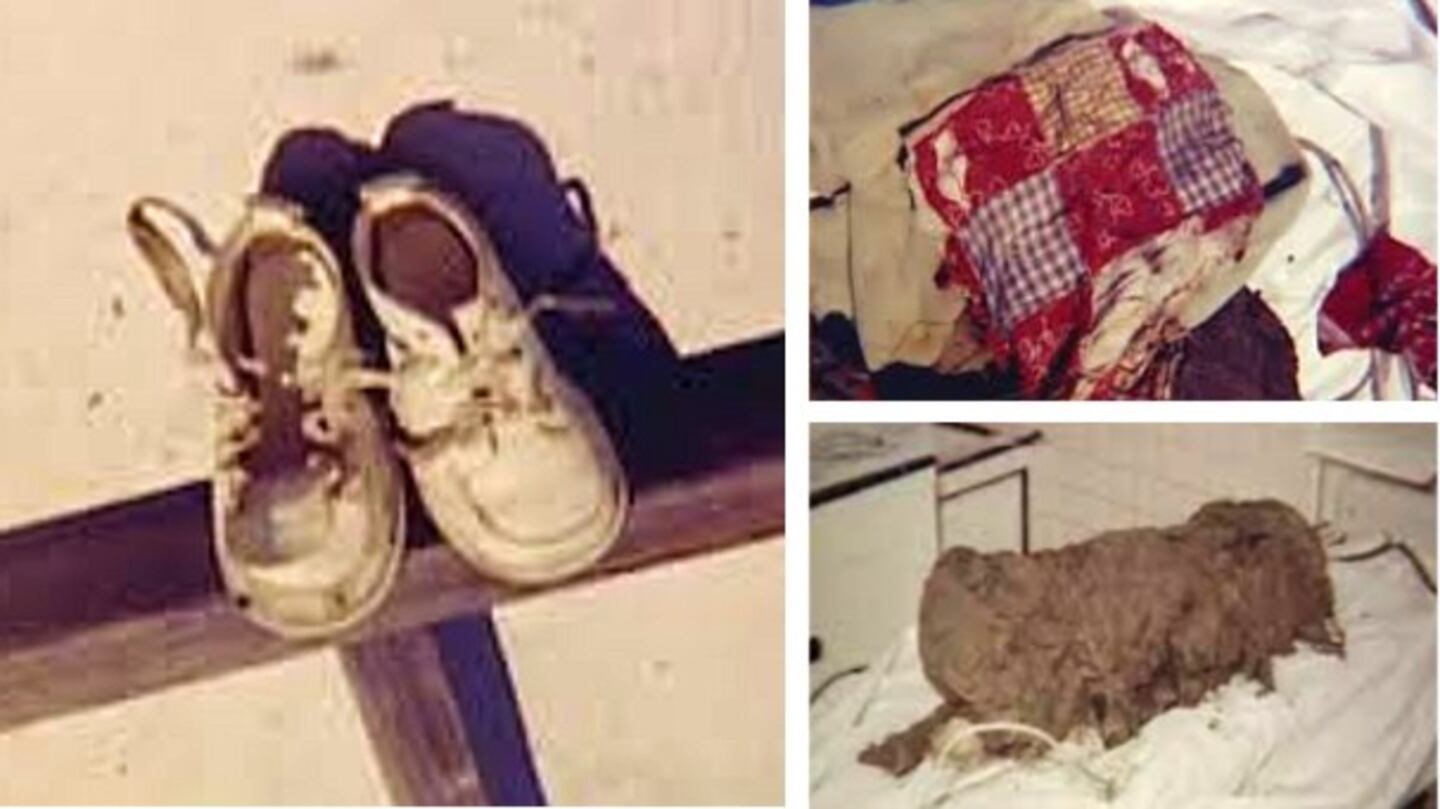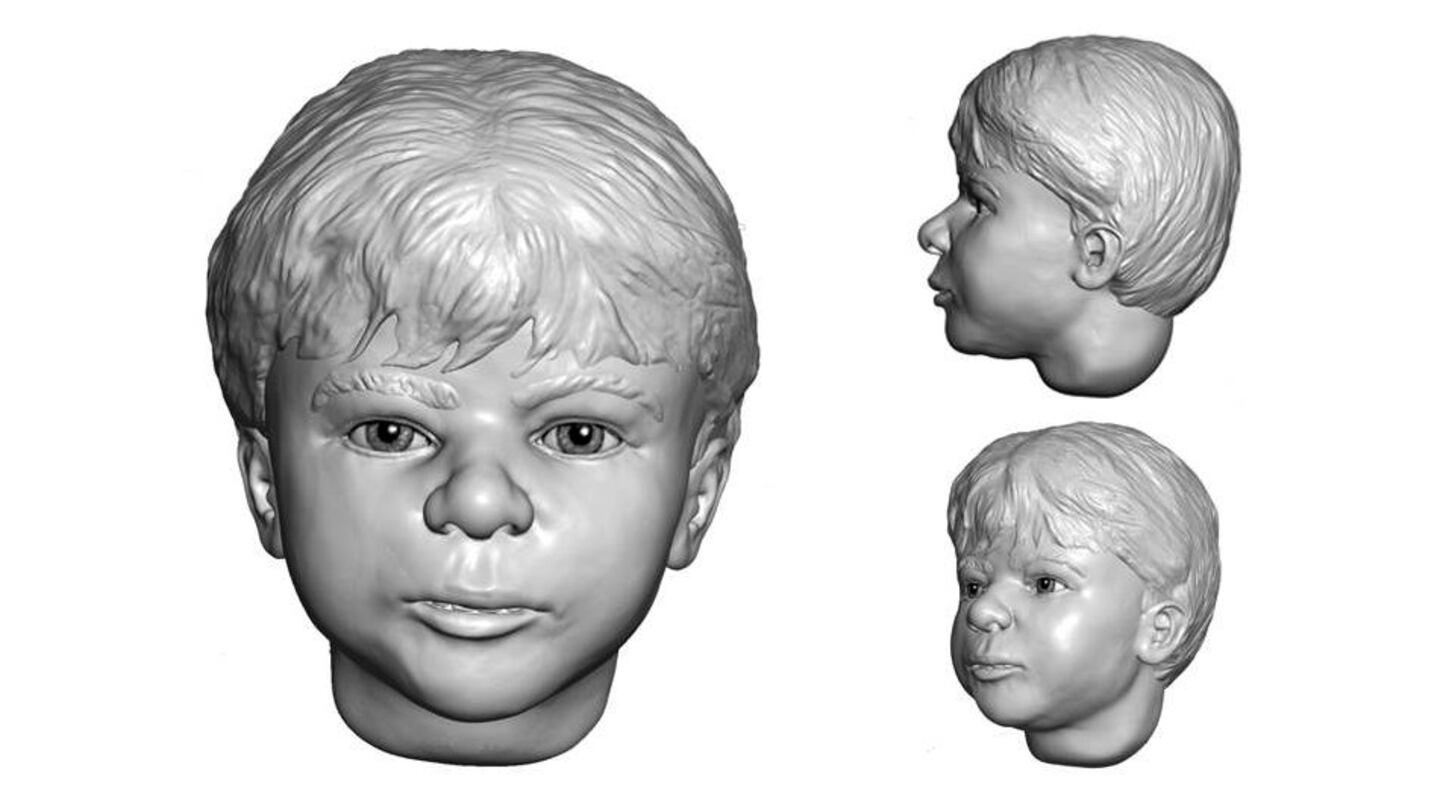ASHLAND, Ore. — For nearly 58 years, the boy has simply been known as Ashland Baby Doe, or the Keene Creek Boy.
An Oregon man fishing in the Keene Creek Reservoir near Ashland the evening of July 11, 1963, hooked what he initially thought was a discarded bundle of blankets. When he reeled his catch in, however, he made a startling discovery.
He had snagged the body of a toddler, wrapped in multiple layers of bedding. The aqua blanket and handmade patchwork quilt were bound with wire and weighted down with iron molds, according to Jackson County Sheriff’s Office officials.
The child, estimated to be between a year and 2 years old, appeared to have characteristics of Down Syndrome or another genetic abnormality. His cause of death could not be determined, though his death was deemed suspicious because of how he was found.
The boy was buried in a cemetery in Medford, his name listed as John Doe.
“Name known only to God,” the original marker read.
Until now.
Jackson County authorities on Monday announced that cold case detectives, with the help of genetic genealogists, have positively identified the boy as Steven “Stevie” Alexander Crawford, who was born in October 1960 in Las Cruces, New Mexico.
The boy, who had been in the water for months, was 2 years old when he died, authorities have determined.
Stevie was identified after CeCe Moore, chief genetic genealogist with the Virginia-based Parabon Nanolabs, tracked down two potential siblings whose DNA profiles were in GEDmatch, an open-source DNA database people use to trace their ancestry.
“An interview with a possible relative revealed that as a child, he had a young sibling named ‘Stevie’ with disabilities born in New Mexico,” according to Oregon State Police officials. Stevie, the man said, had lived in Oregon in the early 1960s but “mysteriously vanished from the family with little explanation.”
Investigators with the state police and the Jackson County Sheriff’s Office ran into a snag: New Mexico’s vital records, which include birth and death certificates, are not publicly available. Oregon detectives requested the information from the state records department, which turned up Stevie Crawford’s birth certificate.
“This was proof that a 2-year-old child named Stevie existed,” Oregon state investigators said. “After 58 years, the Keene Creek Baby Doe had a possible name.”
A mouth swab provided by the brother proved Stevie and the dead toddler were one and the same, authorities said.
“This disabled little boy was loved and missed by his siblings and deserved to have a name and identity,” Moore told ABC News. “Stevie’s case was a very emotional one for all of the investigators involved. Once the genetic genealogy research led to his family, the fact that his surviving family has been very loving and willing to assist has been a great comfort.”
KRQE in Albuquerque reported that Stevie’s mother and stepfather have both since died, and his father’s identity is uncertain. According to ABC News, the boy’s disability, or the possible lack of adequate medical care, could have been a factor in his death.
Stevie’s remaining family plans to relocate his body to a family plot in New Mexico.
23 investigators in 58 years
When Roy Rogers, 65, of Rogue River, snagged the body of the little boy in the summer of 1963, John F. Kennedy was president. The price of gas was about 29 cents per gallon and there was no such thing as the internet.
Most vital in the Stevie Crawford case, however, was the fact that even the most rudimentary DNA technology was still three decades in the future.
Authorities initially tried to use the boy’s blankets and clothing to identify him. According to the Doe Network, the unidentified toddler was found dressed in a high-quality red, long-sleeved pullover with thin white stripes, gray corduroy pants and a cloth diaper fastened with blue diaper pins. He was also wearing a pair of white baby walking shoes known as “Jumping Jacks.”
Images of the tiny shoes and the blankets found with the remains were made public in the hope they would jog the memory of someone who had known the boy.
At the toddler’s autopsy, the medical examiner theorized that the freezing temperatures of the previous winter had helped preserve the boy’s remains, but that the victim had likely died sometime after October 1962, the Doe Network’s website states.
Less than a month after Rogers reported the boy’s body to authorities, the case had gone cold. In August 1963, the case file was archived.
There it remained for 45 years.
In 2007, Jim Tattersall, a special investigator for the Jackson County Sheriff’s Department, found the file among the sheaves of papers in some boxes marked “old sheriff cases.” He took it to Detective Sgt. Colin Fagan, who is now retired.
“This case kind of just fell through the cracks,” Tattersall told KRQE. “When I brought this file to the detective sergeant, he said, ‘This is not good. We gotta get into this.’”
The pair reopened the case.
“In August 2008, the tiny body was exhumed from his resting place at Hillcrest Memorial Park Cemetery and a DNA sample was taken,” Jackson County Sheriff’s Office officials said. “This lead also went cold when the Combined DNA Index System (CODIS) returned no matches.”
Two years later, in 2010, the National Center for Missing and Exploited Children used a cranial reconstruction to create a composite image of what the dead boy might have looked like.
“The day that we opened that file and saw this three-dimensional image of this child was pretty emotional for us as investigators,” Fagan told KRQE. “We had adopted him as our child and called him the Keene Creek Boy.”
When no new leads surfaced, the investigators’ hearts sank.
“We all thought, ‘That was it, we’ll never hear any more about it,’” Tattersall said. “We thought we’d probably die before anything came up about this little boy.”
It would be another 10 years before cold case detectives received their big break, which came in the form of a tip through the department’s Facebook account. Jackson County Sheriff Nate Sickler asked Christian Adams, a medical examiner’s investigator, to take another look at the case.
Oregon State Police Medical Examiner's Office Assists @JCSO_Oregon in identifying the oldest unidentified human remains case in Oregon-https://t.co/RsBq7OUZGU pic.twitter.com/JXCfPN7gLz
— Oregon State Police (@ORStatePolice) June 30, 2021
IDENTIFIED AFTER 58 YEARS!
— Parabon (@Parabon) July 1, 2021
Oregon authorities and countless others worked tirelessly over many years, and have identified a little boy found deceased in Jackson County in 1963 as 2-year-old Stevie Crawford.https://t.co/hZ2GT5snsa
Adams collaborated with the Oregon State Police to submit a DNA sample taken during the baby’s 2008 exhumation to Parabon Nanolabs. In the past three years, Parabon has helped law enforcement agencies in the U.S. and Canada identify more than 165 suspects or persons of interest in unsolved criminal cases.
Parabon has also helped to identify dozens of unidentified bodies, and this past October, a DNA profile suitable for comparison to genealogy databases put the Keene Creek Boy on that same path.
“The first Parabon Nanolabs report to be completed was a DNA phenotyping report, where genetic material was used to determine eye color, hair color, skin color and the ancestry of the deceased,” Oregon State Police officials said. “The report predicted this child was of Northern European descent, with very fair skin, brown eyes and brown to light blonde hair.
“This information was immediately used by NCMEC to revise their previous composite image so that an updated image could be used by law enforcement.”
Moore, Parabon’s genealogist, then plugged the genetic data into GEDmatch, where she found members of the boy’s immediate family who were able to help identify him.
The genetic and circumstantial evidence led authorities to conclude that Ashland Baby Doe is Stevie Crawford. Oregon State Police officials said his brother had been notified and investigators are working to release the boy’s body to his family.
“This case represents a remarkable amount of persistence and inter-agency collaboration throughout three generations of Jackson County Sheriff’s Office detectives, Jackson County medico-legal death investigators, Oregon State Police, the Oregon State Medical Examiner’s Office, the National Center for Missing and Exploited Children, the FBI, DNA Labs International, and Parabon Nanolabs,” state police officials said.
>> Read more true crime stories
Moore tweeted that she was proud to have worked with everyone involved in identifying Stevie after so long.
“Thank you to his family for being so loving and helpful,” Moore wrote.
Fagan told KRQE that he will always have questions about how Stevie died. Not only has his mother died, but the results of his autopsy were destroyed 25 years after his death, under Oregon law.
“How did he get to this small reservoir in the Cascade Mountains of southern Oregon in 1963? Under what circumstances did he die?” Fagan asked. “He was well-dressed, wrapped in this handmaid quilt, and this wasn’t like a child who had been discarded like the garbage.”
Despite the remaining questions, the investigators are gratified to know they have returned the toddler to his family after more than half a century.
“He will be buried with his name and connected to his family, and his ancestry is now established,” Fagan said. “I feel very good about that.”
©2021 Cox Media Group














